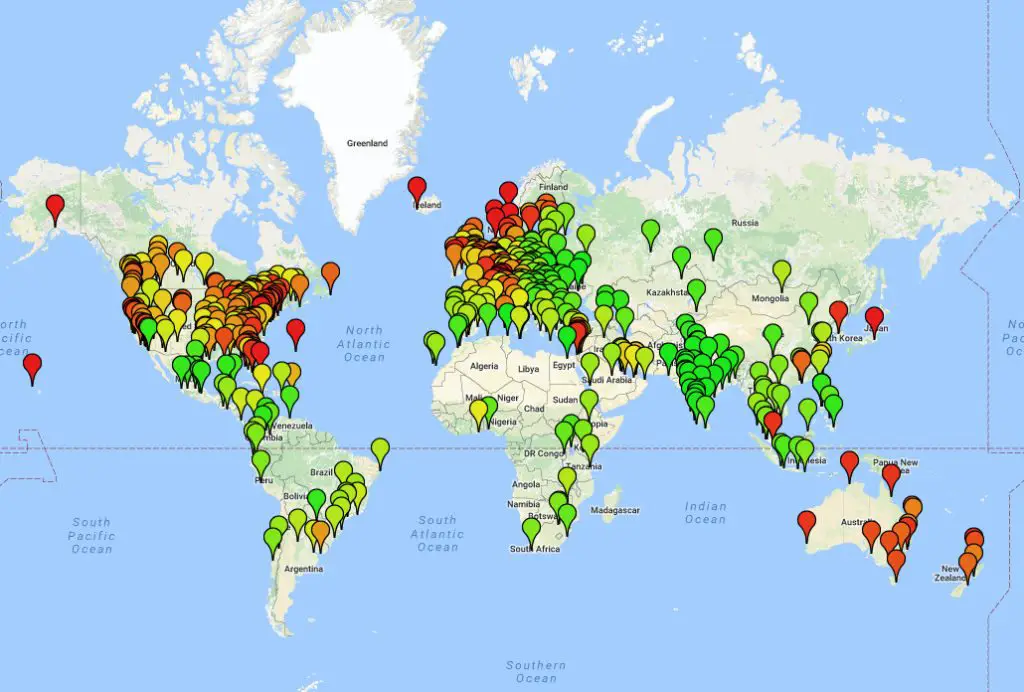Update as of August 2023: What a difference six years can make! Obviously, the world has undergone enormous changes since this article was first published.
The pressures of every day life in highly developed countries often cause us to ask a simple question – why? Why am I living like this? Why don’t I have more time to enjoy my life? Why can’t I spend more time with my children, my hobbies, reading for pleasure or just sleeping?
We see articles about the Happiness Index and see that our country is somewhere down the list. We may be ‘successful’ but a little nagging voice keeps asking why? 
The answer, of course, is the treadmill of life – mortgages, school fees, utilities, transportation costs and even the high cost of staying entertained. But is there an alternative? Is it possible to just quit the high life, sell up and take it easy? After all, we live in a connected world. Is there really any need to live where we do?
Let’s start by looking at 20 seriously cheap countries you could choose to live in. We’ll avoid those that are classed as dangerous, such as South Africa, Afghanistan and Syria. We’ve also avoided those with repressive regimes like Saudi Arabia and Iran.
Each country is ranked according to the Numbeo database which uses crowd-sourcing to rate cities and countries globally. As of this minute, the database comprises 3,590,235 prices in 6,445 cities entered by 393,607 contributors. We’ve used four key affordability metrics to compare nations.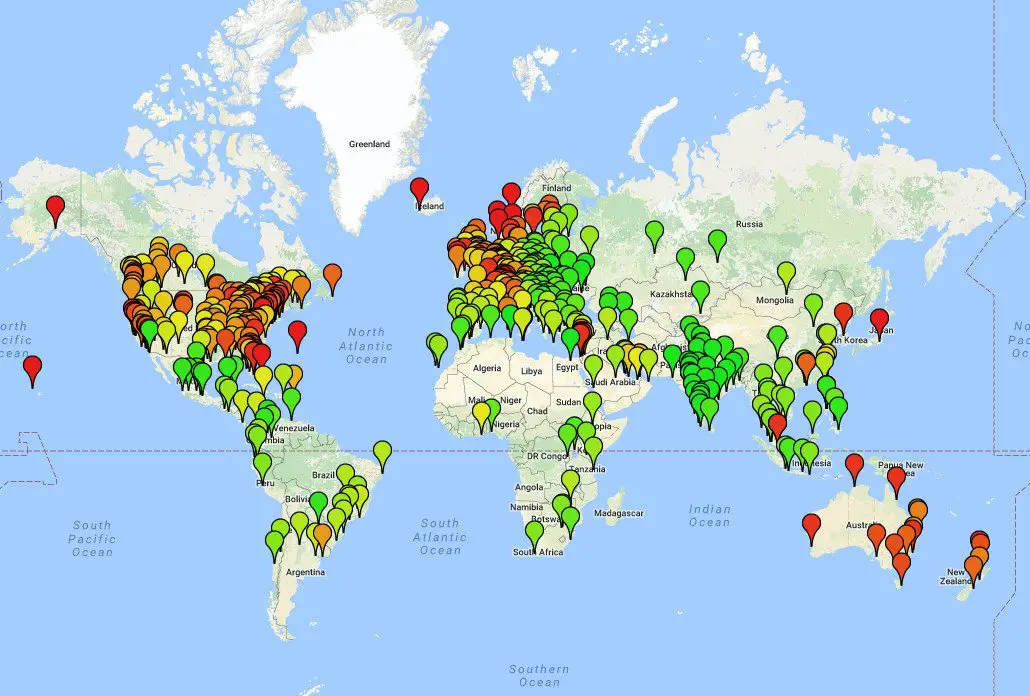
The cost of living in New York City is used as the base for comparison purposes. Of course, New York – with a Numbeo score of 100, is far from the most expensive city to live in, but it’s certainly ‘up there’. Go here to discover the 10 most expensive cities to live in.
And so, to your options…
Contents
European locations:
Europe has some of the most and least developed nations within it’s boundaries. At one end of the spectrum we can place Germany while at the other, we have the abjectly poor Moldovia. In between there are some gorgeous, safe, very inexpensive options:
Estonia
Although part of the Soviet Union until 1991, Estonians have always displayed a fierce independence. Wedged between Russia and Latvia, just across the Baltic Sea from Finland, its 1.3 million people speak Estonian and Russian. History has been preserved with castles, churches and hilltop fortresses dotting the countryside and the ‘Old Town’ within the modern capital of Tallinn.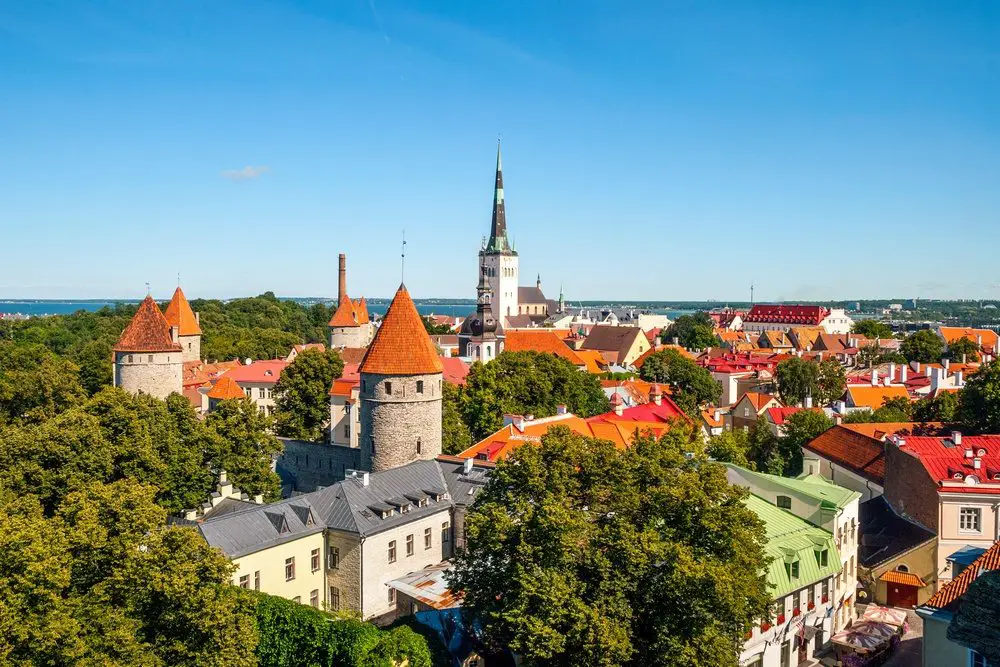
If you like a little isolation, Estonia has more than 1,500 islands to get away to. It also has some of Europe’s best old-growth forests and many picturesque lakes. Estonia, a member of the European Union and NATO (much to Russia’s chagrin), has a strong economy making it a country worthy of consideration.
Update: The Russian invasion of Ukraine drastically changed the course of developments throughout Eastern Europe. Estonia’s open and vigorous support for Ukraine has raised political tensions between Russia and the pro-West Estonian government.
The neighboring war has also had serious repercussions on Estonia’s economy. The latest forecasts for the country’s immediate future don’t look so good right now. Analysts expect that the country’s real GDP to decrease by 0.4% this year.
Still, the cost of living in Estonia is much cheaper than in the US or Western Europe. If you want to rent a furnished apartment in an upscale neighborhood in Estonia, expect to pay around $1,100 per month. A basic lunch menu will cost you about $12.
Slovenia
If bitterly cold winters aren’t your thing, head a long way south to Slovenia. Almost land-locked, Slovenia does have a small frontage to the Adriatic. This Central European nation has been bypassed by most of the development to the west. History abounds as does natural beauty including Lake Bled, a glacial lake fed by hot springs.
- Local purchasing power is 21.77% lower than New York
- Rent is 85.94% cheaper than New York
- Groceries are 56.52% cheaper than New York
- Local goods and services are 46.76% cheaper than New York
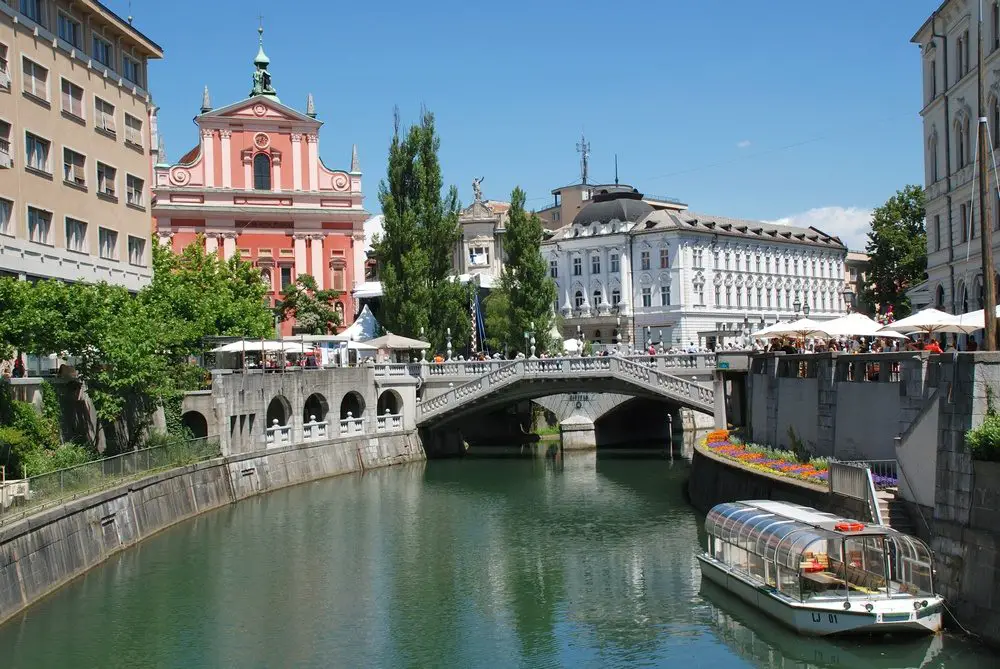
Now a member of the European Union, Slovenia separated from Yugoslavia in 1991. Despite a major economic recession in 2012, the economy is strong and the country is modernizing rapidly. As of 2015 some 73 percent of the population of 2.1 million residents were connected. The official language is Slovenian but you can step over the border any day to enjoy a little Italian camaraderie and language. Ciao!
Update: Like Estonia, Slovenia has contributed humanitarian, material, and military aid to Ukraine. And like many other nations in Eastern Europe, the war has had a profound impact on Slovenia’s economy.
The OECD has issued a report predicting that the country’s growth will slow to 1.5% this year before bouncing back up to 2.6% in 2024.
Living in Slovenia will now cost you more than it did six years ago. Inflation has gone up, prompting protests here and there. Even so, Numbeo says the cost of living in Slovenia remains 38% lower than in the US. Not too shabby, we say.
Croatia
You’ll find this gem immediately adjoining Slovenia to the south. The long coastline along the western shore of the Adriatic includes more than a thousand islands. Like Slovenia, it is a country packed with history and natural beauty.
- Local purchasing power is 39.29% lower than New York
- Rent is 89.91% cheaper than New York
- Groceries are 60.09% cheaper than New York
- Local goods and services are 52% cheaper than New York
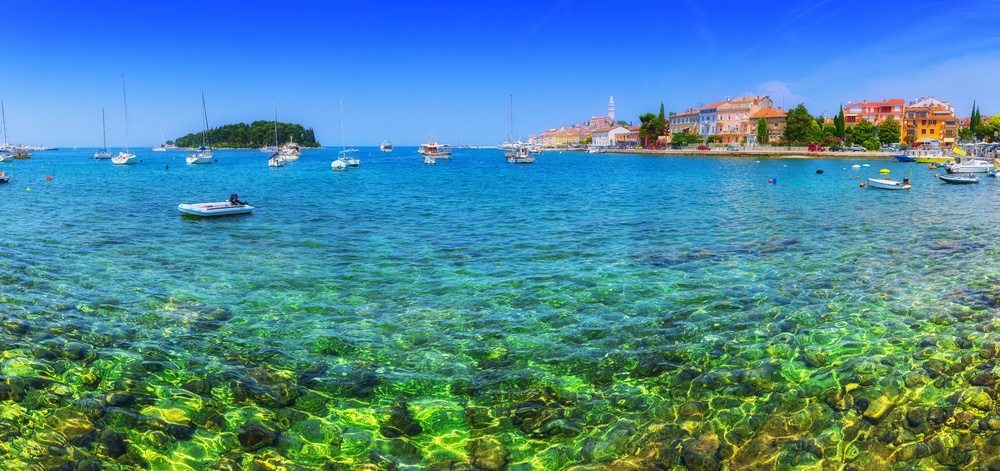
The low cost of living has made Croatia a popular destination for EU tourists. The capital is Zagreb, and most people speak Croatian.
Update: Croatia’s real GDP grew by a strong 6.3 percent last year, supported by robust personal consumption and investments. Inflation has eased to 7.4% from 10.67% last year. That’s all good news.
But Croatia’s productivity remains far behind its regional peers, reflecting insufficient investments in research and technology. Even more disturbing, the Roma and ethnic Serbs continue to face discrimination, as do LGBT+ people.
The cost of living in Croatia remains far cheaper than in the US. You can find a decent apartment in Zagreb, the capital, for around $500 per month. That same apartment would cost at least $2,000 in New York City. The price of food is still a fraction of what it would cost you in the US and Australia.
Cyprus
Geographically, Cyprus sits much closer to the Middle-East than to Europe, with Beirut, Lebanon, the nearest major city. However, the European influence abounds. An island nation in the far eastern Mediterranean Sea, Cyprus is a member of the EU. The island is divided with Turkish Cypriots in the north and Greek Cypriots in the south.
- Local purchasing power is 4.08% lower than New York
- Rent is 87.72% cheaper
- Groceries are 55.94% cheaper
- Local goods and services are 45.93% cheaper
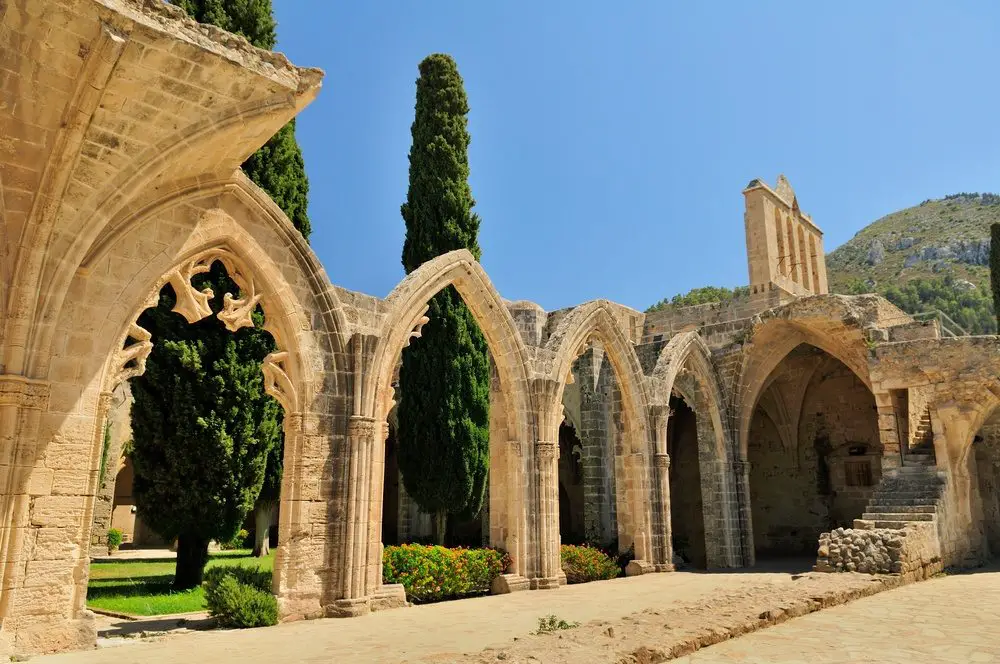
Millennia of history is obvious and the warm Mediterranean climate, inviting beaches and the fact that English is widely spoken, have attracted a relatively large expat population. The official languages are Turkish and Greek.
Update: The good news is that the economy Cyprus has been largely resistant to the fallout from Russia’s invasion of Ukraine. The country’s GDP output saw a 5.6% expansion in 2022 as pent-up demand in the aftermath of COVID 19 boosted consumption, and tourist arrivals rebounded.
Employment has recovered, too, from the steep decline during the post-Cyprus-financial-crisis low. However, high energy prices continue to increase inflation. In fact, the rate of inflation in the country has risen from 0.53% to around 4% today.
That said, the cost of living in Cyprus is still a lot cheaper than it is in other European countries. But, like the rest of Europe, the country risks a recession should the war in Ukraine escalate any further.
Hungary
Another EU member, totally landlocked Hungary is considered by many to be one of the world’s most beautiful countries. Sitting in the heart of Europe, Hungary has been a crossroads of civilization. Both Roman and Turkish influences are everywhere especially in spa towns with their hot springs.
- Local purchasing power is 52.48% lower than New York
- Rent is 87.33% cheaper
- Groceries are 66.38% cheaper
- Local goods and services are 57.23% cheaper
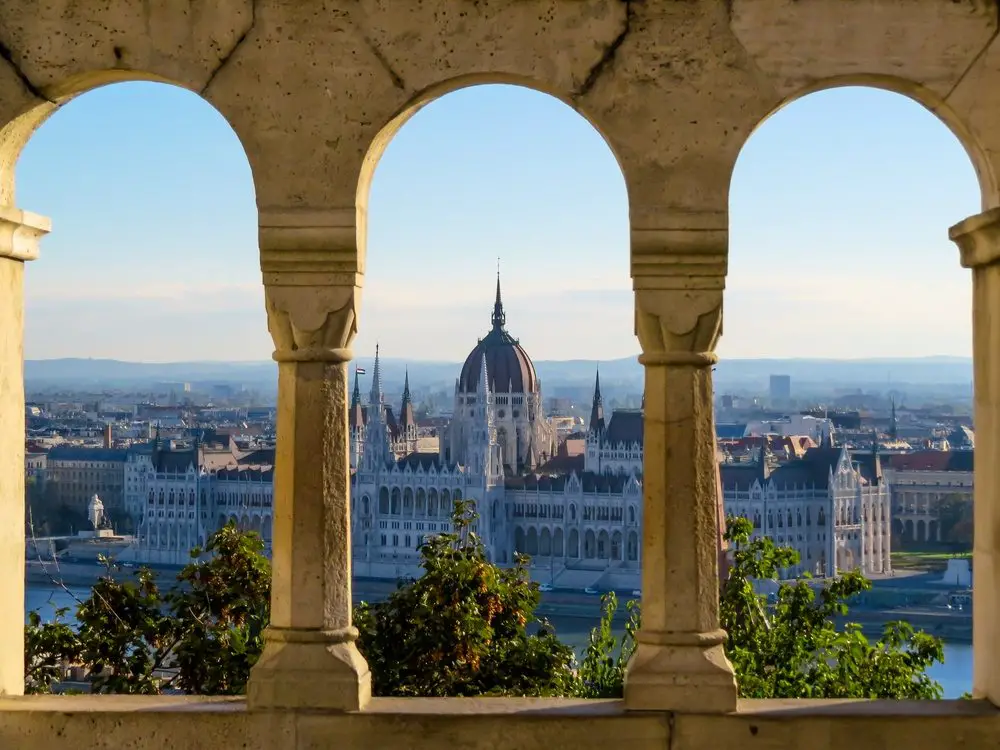
The Danube flows through the centre of the capital, Budapest, as it heads out to the Black Sea. Hungary is renown for music and art.
Update: Hungary has experienced major ideological divisions since 2017. Post-communist political parties and the government have been bickering non-stop for the past six years.
But they have all agreed on the privatization of state-owned assets, the creation of a politically and culturally pluralistic society, and the attainment of membership in the Western community of nations by joining NATO and the EU.
On average, the cost of rent is still a whopping 71% less in Hungary in 2023 than in the US! Overall, you can expect to spend about 60% less in Hungary for a similar lifestyle. Not bad at all.
Slovakia
Slovakia is the European Union’s poster child. Part of Czechoslovakia until 1993, it joined the EU in 2004 and has since built a robust economic base.
- Local purchasing power is 35.25% lower than New York
- Rent is 83.51% cheaper
- Groceries are 61.16% cheaper
- Local goods and services are 55.1% cheaper
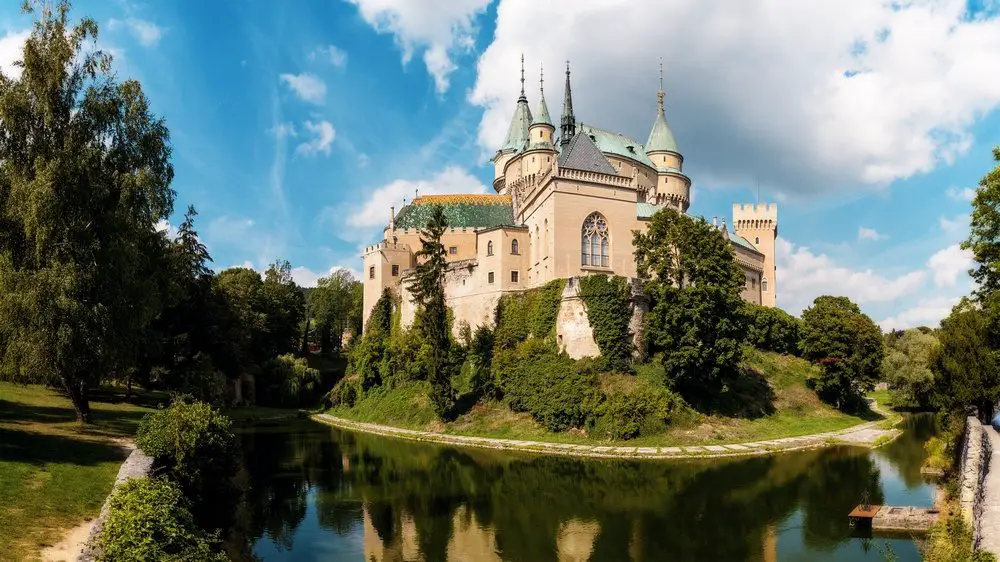
Slovakia – formerly a part of Czechoslovakia, has maintained its fierce individuality and unique culture despite it’s absorption into the old USSR up until 1989. With around 5.5 million residents sharing a mostly mountainous 49,000 square kilometres, populations tend to cluster in towns and cities. Home ownership is an incredibly high 90% – evidence of both low prices and strong employment opportunities. The language is Slovak but as the country welcomes more than a half-million tourists a year, English is becoming more common. If you enjoy snow skiing and history, while still looking for work opportunities, Slovakia will appeal.
Update: The pandemic sank Slovakia into a recession in 2020. The economy returned to growth in 2021 but recorded a somewhat lackluster growth of 1.7% in 2022 as high inflation weighed on private consumption and exports shrank.
Things don’t look too rosy on Slovakia’s political front, either. The country is a NATO member-nation, but Prime Minister Eduard Heger has resigned. A caretaker has assumed his place, deepening political divisions in the country.
In 2023, Slovakia is more expensive than 70% of countries in Eastern Europe, but cheaper than 59% of countries in the world. Compared to the US, Slovakia has lower prices for most things, such as food, rent, and transportation. For example, a meal in an inexpensive restaurant costs about $7.66 in Slovakia, while it costs about $20 in the US.
If you happen to be living in Australia and are thinking of moving to Slovakia, you can expect to pay less for everything except clothes, internet services, and electronics. As always, there are those trade-offs to consider.
Serbia
One of the world’s newest nations, Serbia came into existence in 2006. Prior to that it was part of Yugoslavia and then part of the Union of Serbia and Montenegro.
- Local purchasing power is 59.2% lower than New York
- Rent is 92.75% cheaper
- Groceries are 75.04% cheaper
- Local goods and services are 66.21% cheaper
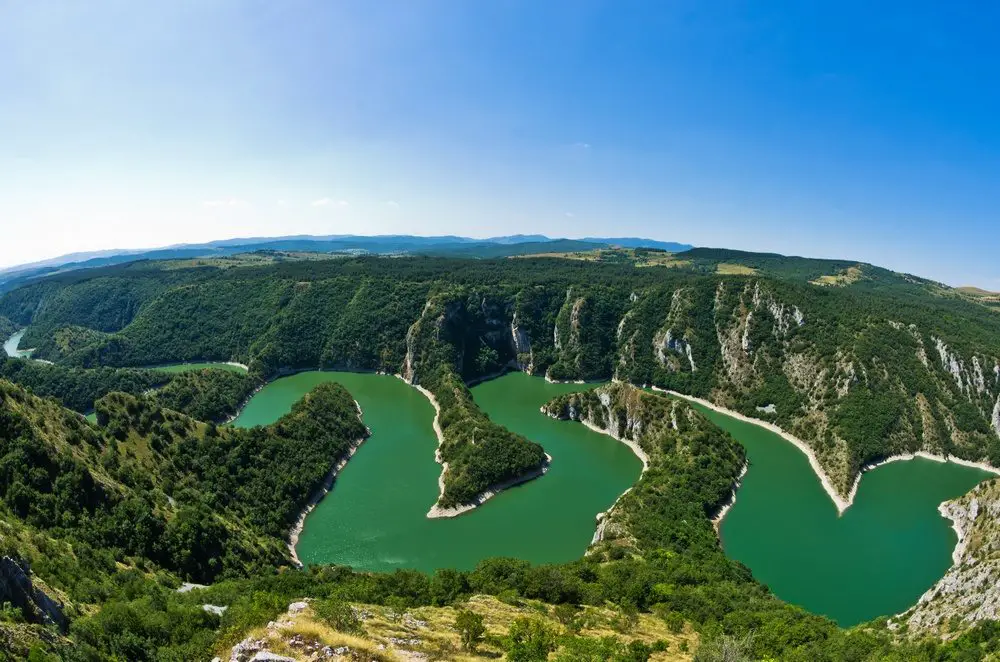
Landlocked by Montenegro, Croatia, Bosnia-Herzegovina, Bulgaria and Romania, Serbia’s only waterway is the famed Danube. Having been part of the Roman, Byzantine and Ottoman empires in past centuries, and the USSR more recently, architectural contrasts abound. The population of seven million people speak Serbian.
Update: Serbia is undergoing dramatic transformations at the moment. Since 2017, the country has become a candidate country for membership in the EU. The Serbian government has managed significant progress in promoting structural and institutional reforms.
Serbia rebounded strongly from the impact of the global pandemic, with growth reaching 7.4 percent in 2021. But, again, the war in Ukraine slowed economic growth to 2.2%. Other than that, the country is still well among the cheapest places to live in Europe.
Georgia
Apricots and long lived people! Georgia is another cultural crossroad. It was annexed by the Russians in 1800, declared independence in 1918 and was then forcibly bought back into the USSR in 1921. Georgia gained full independence in 1991 but this was followed by 15 years of political instability. However, major legislative reforms in 2005 and 2006 guarantee individual rights and freedoms including free speech with newspapers and TV programs often criticizing the government without fear of reprisal.
- Local purchasing power is 66.97% lower than New York
- Rent is 91.43% cheaper
- Groceries are 77.74% cheaper
- Local goods and services are 72.63% cheaper
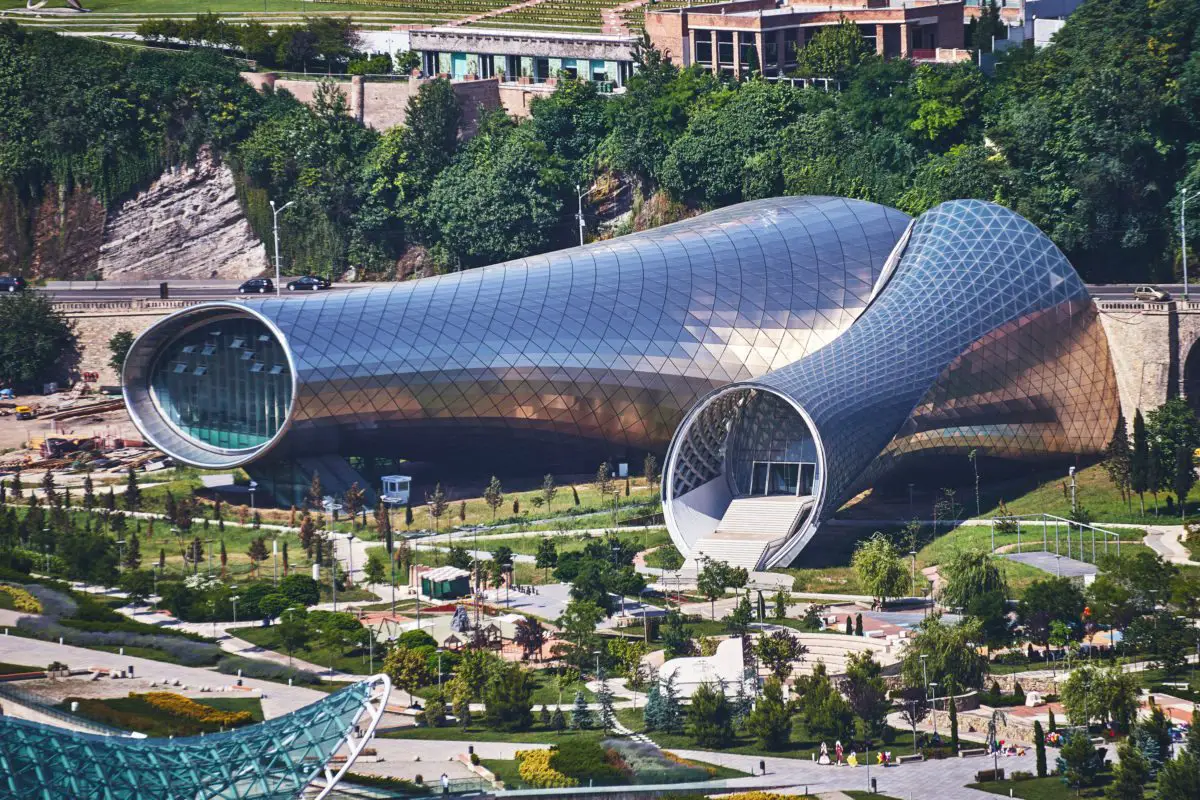
The history, a long common border and an avowed interest in joining the EU has not exactly strengthened relations with Russia. Georgia has 4.3 million people, most of whom speak Russian, Georgian or both. However, if you’re looking for ‘the slow life’ at a very affordable price, sweet Georgia may be your answer!
Update: There has been a lot of social and economic change in Georgia since 2017. New social classes have emerged as the emancipation of the serfs has freed many peasants. The growth of capitalism has created a lively and interesting urban working class.
The World Bank expects the country’s economy to grow by 4.4 percent this year, and it looks like the cost of living will continue to fall as the country recovers from the pandemic.
Yes, we still say Georgia is still a good place for those seeking a slower, more affordable, and otherwise comfortable life.
Macedonia
Birthplace of Alexander the Great, modern Macedonia is another landlocked nation. With a mountainous terrain and numerous lakes, Macedonia boasts ancient towns full of Ottoman and European architecture. Skopje, both the capital and largest city in Macedonia, includes the sprawling Old Bazaar quarter and the National Gallery of Macedonia, housed in a 15th-century Turkish bath complex.
- Local purchasing power is 60.15% lower than New York
- Rent is 93.98% cheaper
- Groceries are 74.59% cheaper
- Local goods and services are 69.07% cheaper
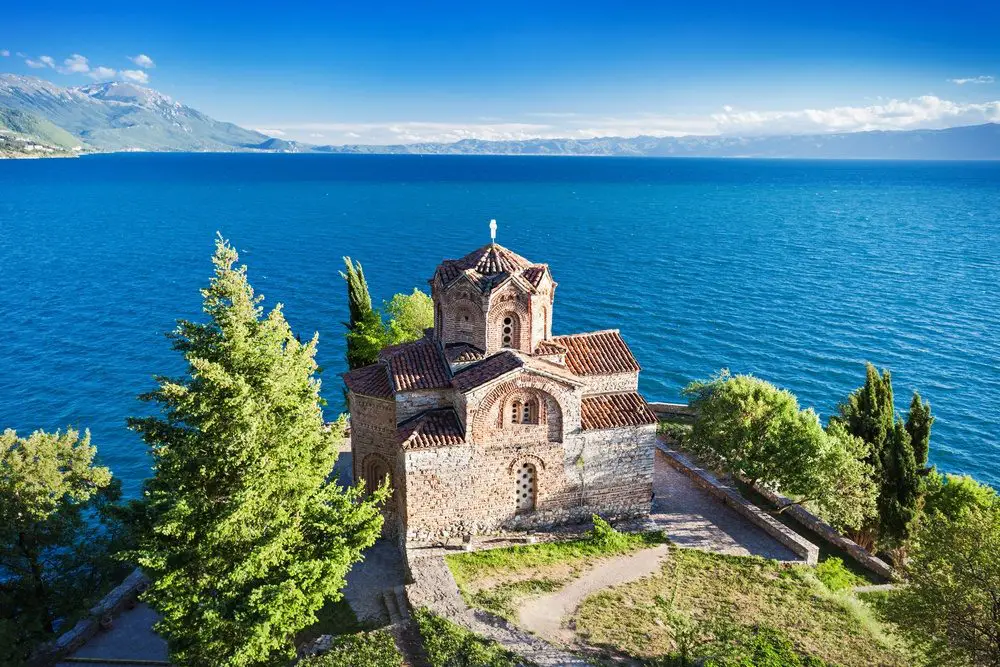
Another country born of the breaking down of Yugoslavia, Macedonia avoided the ethnic violence that afflicted other Balkan countries during that period. Located immediately north of Greece, it has a population of 2.1 million speaking Macedonian and Albanian.
Update: Macedonia signed the Prespa Agreement and became a NATO member in 2020. The government also started negotiations to join the EU last year.
Despite some fallout from Russia’s invasion of Ukraine, higher energy and food prices, the economy is recovering quite well after the pandemic, managing a 2.1% growth last year.
If you’re wondering about the cost of living in Macedonia, it’s still pretty affordable. It’s still certainly much cheaper than most European countries and the United States. You can rent a comfortable apartment for around US $400 a month and eat a hearty meal for only $3.00!
North African locations:
When most of us think of North Africa, we imagine riots, rebellions and repression. However, there are three countries that are certainly worthy of consideration (the third being Algeria). These three are both more economically and politically stable while also welcoming of visitors.
Morocco
With its mix of Berber, Arabian and European cultural influences, the hippies may have had it right as they headed in their thousands to Marrakesh and beyond. Morocco has a lot to offer those with a modicum of financial well-being.
- Local purchasing power is 58.8% lower than New York
- Rent is 89.56% cheaper
- Groceries are 68.49% cheaper
- Local goods and services are 64.47% cheaper
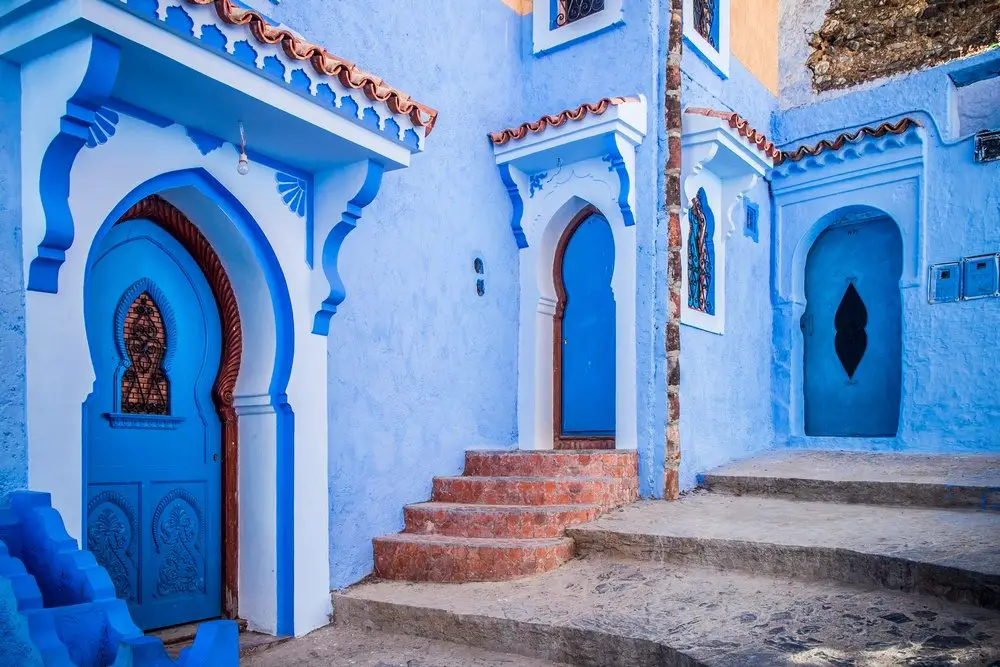
Directly across the Strait of Gibraltar from Spain, you can choose between its Atlantic and Mediterranean coasts for swimming and sunbathing or take to the steep mountains in the country’s interior for a cooler option. Home to 33 million people, Arabic and Berber are the county’s official languages. However, both French and Spanish are widely spoken as is, to a lesser extent, English.
Update: Morocco was hard-hit by an extended drought during the pandemic. But the country bounced back in 2021 with a good harvest, strong exports and remittances, and a fast vaccination campaign. The government also worked on reforms to improve public services, the business environment, and integration with the world economy.
According to Numbeo, the average cost of living for a single person in Morocco is about $440. That is far less than you would have to spend in New York or London or Sydney. A family of four would need about $1,500 to live in reasonable comfort.
Tunisia
Fronting on to the Mediterranean and backing on to the Sahara, Tunisia is rich in both Roman and Islamic artifacts and architecture. This is the home of the fabled city of Carthage and some of the greatest battles of ancient times. Long Mediterranean beaches and islands like Djerba make Tunisia an attractive option.
- Local purchasing power is 59.81% lower than New York
- Rent is 93.9% cheaper
- Groceries are 72.42% cheaper
- Local goods and services are 71.26% cheaper

With Algeria to the east and Libya to the west, Tunisia’s population of almost 11 million is quite prosperous, with both agriculture and tourism playing important roles in the economy. Arabic and French are are the primary languages.
Tunisia had a huge political transition in 2022, with a new constitution, a presidential system, and a bicameral parliament. But the economy is still struggling after COVID-19.
The government is spending a lot on subsidies for energy and food, but that also means more public debt and less credit for businesses. That’s a tough situation right there, don’t you think?
That said, rent is still much cheaper in Tunisia than in Australia, Europe, and the US. Consumer prices in Australia are 161.9% higher than in Tunisia. Those in the US are 103.8% higher, according to Numbeo.
The Indian Sub-Continent:
Geographic, ethnic, religious and cultural diversity abound in this corner of the globe. From the mountains of Nepal to the waddies of Bangladesh to the subtleties of Nepalese cuisine to the hot Madrasa curries, there’s something for everyone… except space if you are determined to live in a major city.
Nepal
Home to eight of the ten tallest mountains on the globe, Nepal also boasts gorgeous fertile plains and valleys and sub-alpine forests. It is bordered by China to the north (by what was formerly Tibet) and India to the east, south and west. Tourism is a major contributor to the economy. Even so, it ranks as one of the world’s poorest nations.
- Local purchasing power is 74.91% lower than New York
- Rent is 96.64% cheaper
- Groceries are 73.62% cheaper
- Local goods and services are 69.98% cheaper

Nepal’s written history goes back thousands of years, It is the birthplace of Buddha. Despite the poverty, Nepalese citizens are a happy lot. The exceptionally low cost of housing, food and clothing will ensure your savings go a long way in Nepal.
Update: The cost of living in Nepal today is still cheaper than it is in Australia, the US, and Europe in almost every aspect. A meal in an inexpensive restaurant in Nepal costs around $2.43. In Australia, that same meal might exact $18 from your wallet. That’s a huge difference!
The overall cost of food and other necessities in Nepal is 65.3% lower than in the US. Rent remains way cheaper. By that we mean 92.5% cheaper on average! That means you can get a nice place in Nepal for a fraction of what you would pay on average anywhere in America.
Sri Lanka
If you’re looking for a tropical island, skirted by beaches but with a cool, central highland, Sri Lanka is going to appeal. This island nation, sitting just across the Palk Strait from India (a mere 20 kilometres at the closest point) is home to eight UNESCO world heritage sites. The decades-long civil war has left tensions between the majority Sinhalese and Tamil minority but time has started to heal.
- Local purchasing power is 69.72% lower than New York
- Rent is 91.26% cheaper
- Groceries are 63.21% cheaper
- Local goods and services are 66.53% cheaper
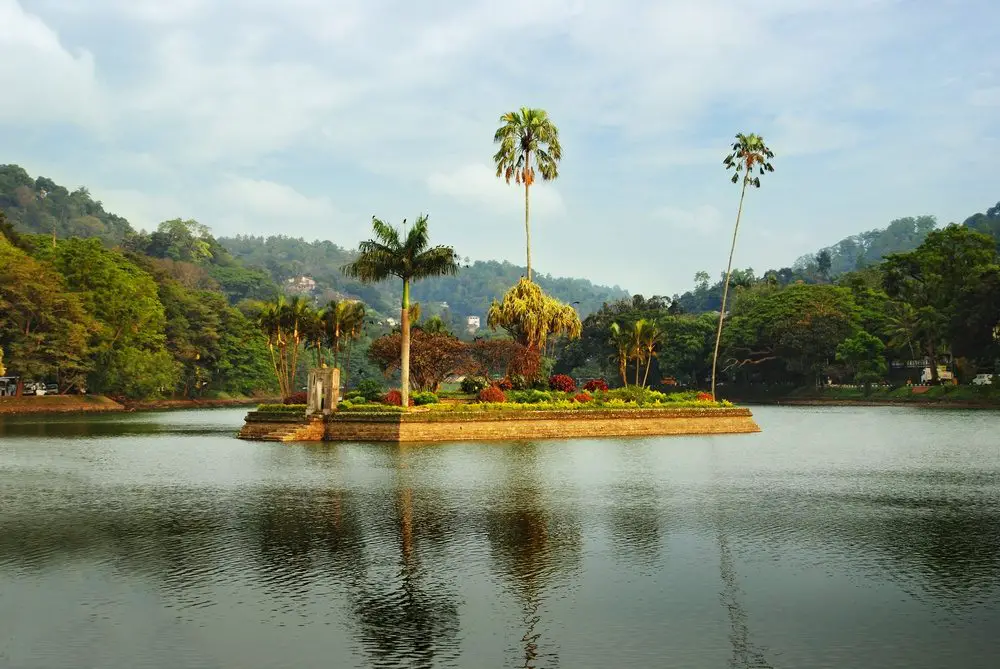
Home to a diverse range of religions and ethnicity, Sri Lanka’s documented history goes back 3,000 years or more with evidence of habitation at least 125,000 years ago. Some 70% of the 22 million population are buddhist with Sinhalese and Tamil being the official languages. As you’d expect with a century and a half of British colonial rule, English speakers are everywhere.
If you like rainforests, warm water, seemingly endless beaches, spicy, full-flavoured foods and happy people, you’ll find a home in Sri Lanka. However, not all has been peaceful on this lovely isle.
Update: In 2020, Sri Lanka held parliamentary elections amid the COVID-19 pandemic, which resulted in a landslide victory for the ruling party led by President Gotabaya Rajapaksa and his brother Prime Minister Mahinda Rajapaksa.
The cost of living amid the lush green beauty of Sri Lanka remains much cheaper than Europe and the US. For example, $2.02 will buy you a cheap but filling meal in Sri Lanka. A similar meal would cost you $15 in the US and $12.38 in Europe.
India
Where to start? The cultural and language differences between east and west, north and south can be so great it’s hard to believe you are still in the same country. The good news for any expat resident is that English is spoken by a very significant percentage of the 1.2 billion population.
India is the cheapest country in the world to live in. Hands down. The official statistics prove it. But not if you choose to live in the major cities like Mumbai, New Delhi, Kolkata or Chennai where extreme income and wealth inequality are obvious on every street corner. It is in the quieter, less crowded corners of the country that the lifestyle will meet your expectations.
- Local purchasing power is 23.27% lower than New York
- Rent is 93.23% cheaper
- Groceries are 74.8% cheaper
- Local goods and services are 74.92% cheaper
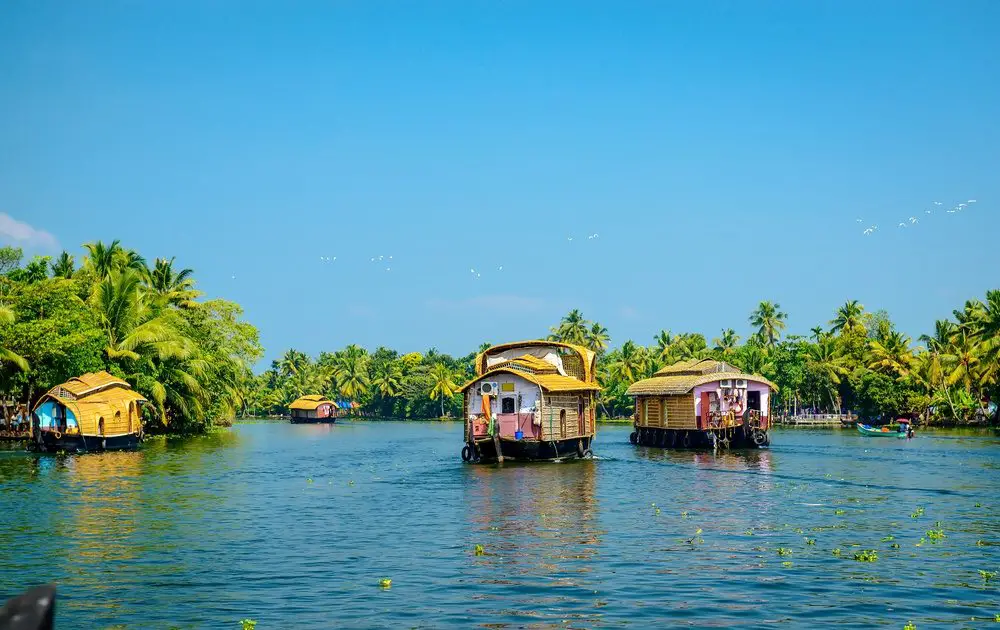
In the 70 years since its independence, India’s economy has grown to become the globe’s fourth-largest. It produces enough food to be a net exporter and life expectancy has more than doubled since independence. It’s a vast nation of considerable beauty with a billion welcoming smiles.
However, despite being the world’s largest democracy, it is plagued by corruption and misogyny. It still condones slavery in the form of indentured labour and it is estimated that close to 13 million young children are working in downright dangerous conditions. India has a lot to offer an expat but your heart will break most days of the week if your eyes are open.
Update:
India’s democracy has come under increasing pressure since 2017. The erosion of civil liberties, the crackdown on dissent, the rise of Hindu nationalism, and the discrimination against minorities under Prime Minister Narendra Modi’s government has dampened international support for the country over the past six years.
Inflation is steadily increasing. But because cost of living prices are on the rise everywhere else, living in India is still a lot easier on the pocket. In fact, consumer prices in the US are 228% higher than those in India. On average, rent prices are 794% higher!
Asia:
China
Just like India, China is a land of geographic, cultural and climatic contrasts. And again, like India, the living is cheap as long as you keep away from cities like Beijing, Shanghai, Shenzhen and Hangzou. In a nutshell, China is a true two speed economy with the non-industrialized areas left way behind in the income stakes.
- Local purchasing power is 32.16% lower than New York
- Rent is 81.33% cheaper
- Groceries are 52.26% cheaper
- Local goods and services are 55.24% cheaper
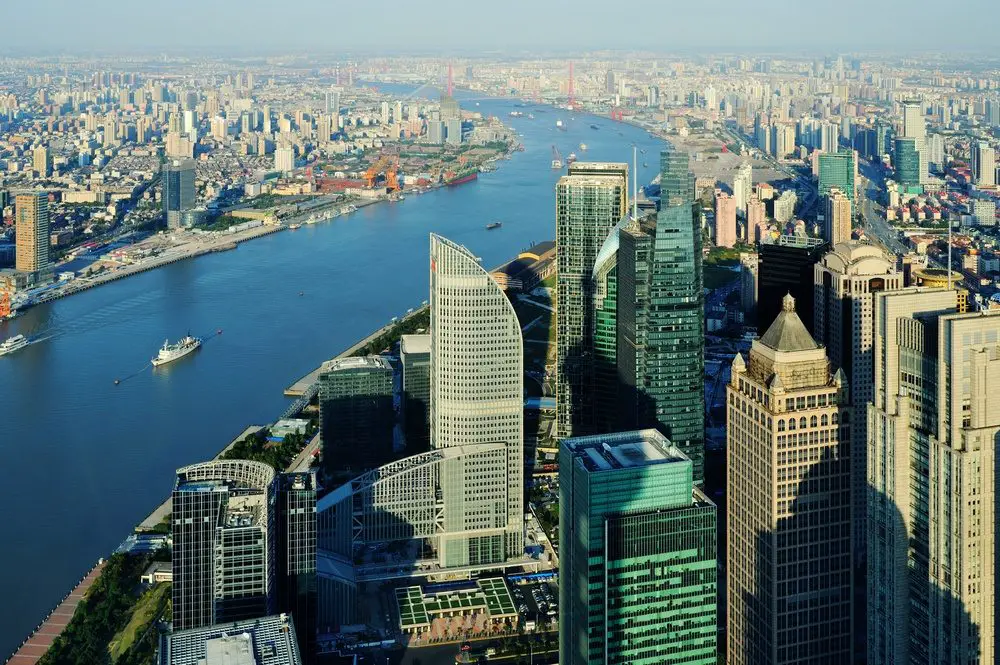
Despite a total population of 1.35 billion, areas outside of the major cities are relatively sparsely populated. China is a massive landmass, possibly second only to Russia if it’s ‘claimed’ territories like Tibet are included. So to avoid the shocking pollution of Beijing and the extraordinary real estate prices of Shanghai, move west young man, move west. There you’ll find bargains. Be warned though that only those of Chinese descent are able to buy property in China. For the rest of us, rentals are still incredibly cheap in many locations.
Update: President Xi Jinping, the big boss of the Chinese Communist Party, has tightened his grip on power over China since 2017. He got rid of the term limit for his presidency, so he is now president for life, Incredibly, he also made his own “thoughts” part of the Party’s ideology. He has cracked down on corruption, dissent, and Muslims in Xinjiang.
Oh, yeah, and there’s that full-on trade war with the US, which has made some people unhappy with him and dampened prospects for economic growth.
The Chinese economy increasingly gives the impression of a bubble that is about to burst. Consumer prices are falling, which means people are not spending enough and businesses are not making profits.
The property sector, which accounts for a big chunk of China’s GDP, is in trouble. Some developers have missed bond payments and investors are worried about defaults.
Taiwan
OK, so this is a contentious point. China would argue that we’re now including a province rather than a country. But since most of the world recognizes Taiwan as an independent nation, I will too. Previously known as Ilha Formosa, meaning “Beautiful Isle”, Taiwan is an island of stark contradictions. It offers spectacular natural mountain scenery, tropical rainforests and rural landscapes yet produces a significant proportion of the world’s computer technology! Taipei, Taiwan’s capital, is no bargain. But as soon as you leave the city, the lifestyle improves immeasurably as does the affordability.
- Local purchasing power is 18.57% higher than New York
- Rent is 85.2% cheaper
- Groceries are 27.11% cheaper
- Local goods and services are 38.62% cheaper

Independent since 1950, the Taiwanese people have a complex relationship with China. Vast sums of private Taiwanese capital have helped fuel China’s economic growth. In fact, more than 70,000 Taiwanese businesses operate inside China. Despite those ties, Taiwan has a very large army and air force ready to instantly defend its independence. If you like a little tension with your breakfast cereal, Taiwan may be the place for you! But be ready to learn Mandarin because English speakers are far and few between.
Update: Taiwan’s president, Tsai Ing-wen, won a second term in 2020 with a landslide victory. The country is moving swiftly toward a Western-style democracy with parliament passing laws to remove symbols of the island’s authoritarian past. Taiwanese lawmakers also legalized same-sex marriage in 2019, becoming the first in Asia to do so.
On average, the cost of living in Taiwan is still 31% cheaper than in the US. Rent in Taiwan is 69.7% lower! Now, the question is whether you can ignore those 450 Chinese ballistic missiles which are reportedly pointed at the country.
Philippines
Another land of contrasts, geographically, ethnically and economically, the Philippines (yes, my American friends, that is the way the Filipino people prefer it spelled) is a land of promise and penury. The Marcos’ and their cronies ripped an estimated $80 billion dollars out of the country but that is probably only the tip of the iceberg. The country is still trying to recover but corruption and the abuse of power continue to throw up massive road blocks. Elected in 2016, the gun-toting, tough talking, new president, Rodrigo Duterte, is committed to ending corruption. Given that the Philippine parliament is probably the original ‘vipers’ nest’ only time will tell if he succeeds.
- Local purchasing power is 64% lower than New York
- Rent is 92.68% cheaper
- Groceries are 66.05% cheaper
- Local goods and services are 65.29% cheaper
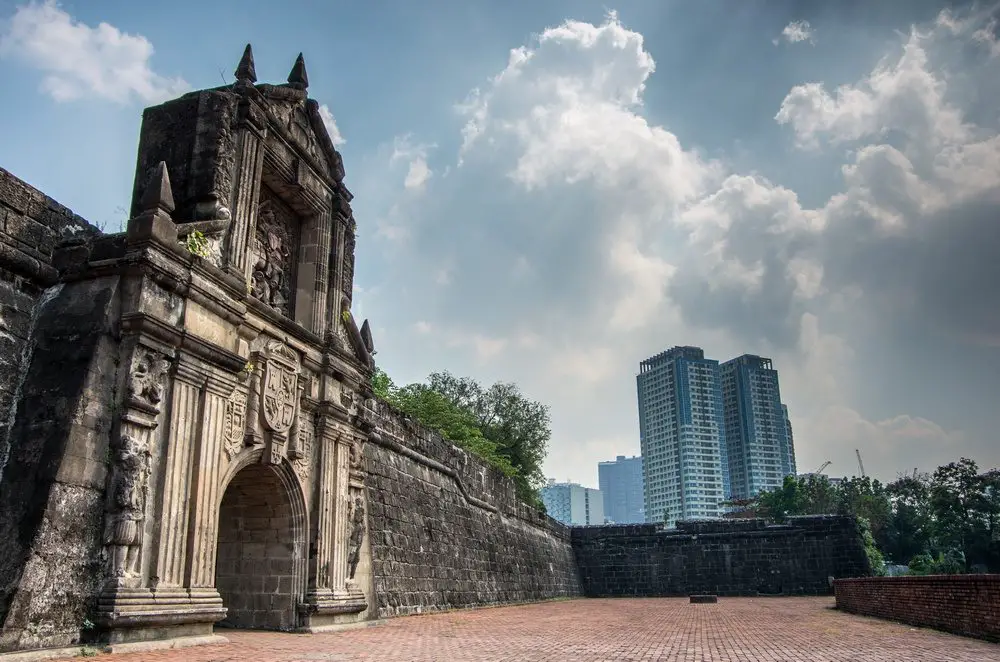
With some 7,000 islands to choose from in the Philippines, there’s sure to be one to suit you. Mountainous and volcanic, the climate is typically warm and sunny, but typhoons seem to hit at least one region every year. The people are generally friendly, happy and hard working, welcoming of others and about one in every 10 of the 101 million residents speaks English!
There are some areas where Muslim insurgents pose a danger to expats but there is plenty of opportunity left for your dollars and you to find a home.
Update: President Marcos, the son and namesake of the former Philippine dictator, won a landslide victory in the 2022 national elections, mostly on the votes of young people who did not live through the Marcos dictatorship of the 70’s and 80s. This has many worried of a repeat of the past, and for good reason.
The Philippines has also recently taken a decidedly more defiant stance against China’s claims on its territorial waters in the South China Sea. The small, ramshackle Philippine Navy has had countless tense confrontations with the armed vessels of the Chinese coast guard and Chinese civilian militia vessels since 2017.
Still, you can get a decent apartment, food, transportation, and entertainment for a fraction of what you would pay in the US, Australia, or Europe. However, you’ll have to put up with higher crime rates, less social security, and dirt-poor public services.
Malaysia
Malaysia is one of the few nations that actually puts out the welcome mat for expats through the “Malaysia – my second home” program. Ethnically diverse, only half the Malaysian population is Malay. The balance are predominantly Chinese and Indian with a further 7% being indigenous, mostly from Sarawak on the island of Borneo.
- Local purchasing power is 26.66% lower than New York
- Rent is 88.81% cheaper
- Groceries are 57.56% cheaper
- Local goods and services are 59.76% cheaper

Since gaining independence from the British 60 years ago, economic growth has consistently been above 5% per annum resulting in an impressive per capita GDP of $28,500, more than three times that of the Philippines ($8,223).
If you are looking for a long history of political stability in a retirement destination, Malaysia might be just the place. Roads are generally good to excellent and the beaches, especially on the east coast of the peninsula are superb. Alternatively, consider Malacca with it’s Portuguese influence and Nyonya cuisine.
Although officially a kingdom, Malaysia is, in practice, a full democracy based closely on the Westminster system. Religious freedom is guaranteed but be warned, there is a push toward Sharia (Islamic) law.
The official language of the 31.5 million inhabitants is Bahasa Malaysia, however, English is widely spoken and taught in schools.
The bottom line is that you can live beach-side in a warm, safe, secure environment for less than 1/5th of what you’re used to.
Update: Malaysia has undergone a huge regime change since 2017. But after less than two years in power, the government – then led by President Mahatir Mohamad — collapsed in February 2020. This resulted in the formation of a new government led by Muhyiddin Yassin, who was previously Mahathir’s deputy.
The new government, known as Perikatan Nasional, has been accused of being a “backdoor government” that lacks legitimacy and popular support. The political situation throughout the country remains volatile to this day. Nonetheless, the cost of living in Malaysia is still cheaper than in Europe or the US. The average rent in Malaysia is 74% lower than in the US, while groceries are 52% cheaper.
Central America
If you’re reading this and you are somewhere in the USA or Canada, Central America is going to offer a lifeline to ‘home’ due to it’s proximity. While there are many expats living in Panama, Costa Rica and even into South America, we settled on the two options that give the best ‘bang for buck’.
Belize
Formerly British Honduras, Belize has a superb location and very low cost of living, making it one of the cheapest countries to retire to. It’s bordered on the north by Mexico, on the south and west by Guatemala, and on the east by the sparkling Caribbean Sea. Given the many cultures and languages that reflect its rich history, the good news is that English is the official language 🙂
- Local purchasing power is 34.33% higher than New York
- Rent is 88.65% cheaper
- Groceries are 50.65% cheaper
- Local goods and services are 44.2% cheaper
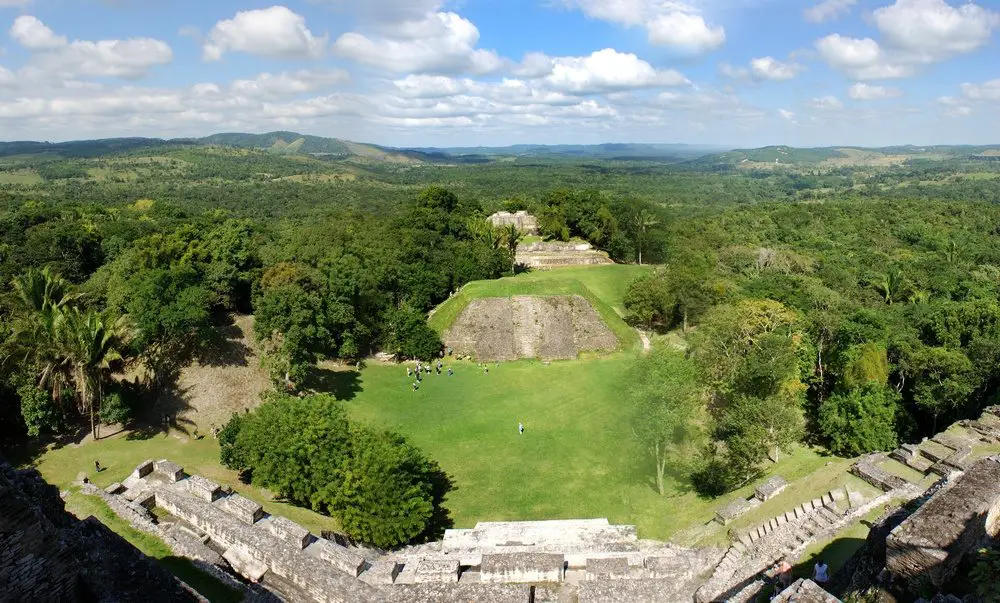
Belize has beautiful beaches and reefs, exotic wildlife and Mayan ruins. The Belize Barrier Reef is the world’s second largest coral reef after Australia’s Great Barrier Reef and offers spectacular diving. Some 60% of the land area is still virgin forest which, together with a rugged coastline, has unfortunately made Belize a drug smuggler’s haven with drugs entering here for movement through Mexico to the USA. (There had to be a downside!)
Update: Moving to Belize from the US or Australia right now still sounds like a tempting idea, especially if you are looking for a change of scenery and a lower cost of living. Belize is a beautiful country, after all.
The country also offers a much lower cost of living on all fronts. This is especially true if you avoid the touristy areas and opt for a more rural or inland location. You can still find plenty of affordable housing, food, transportation, and health care in Belize, as long as you’re willing to compromise on some amenities and quality standards.
However, the country does have a high crime rate, especially in urban areas, and the health care system is not very reliable.
Mexico
Does Mexico need an introduction? I suspect more Americans have visited Mexico than Canada or even Alaska. It’s warm, it’s different and it’s decidedly cheap.
- Local purchasing power is 39.92% lower than New York
- Rent is 91.63% cheaper
- Groceries are 71.94% cheaper
- Local goods and services are 70.19% cheaper
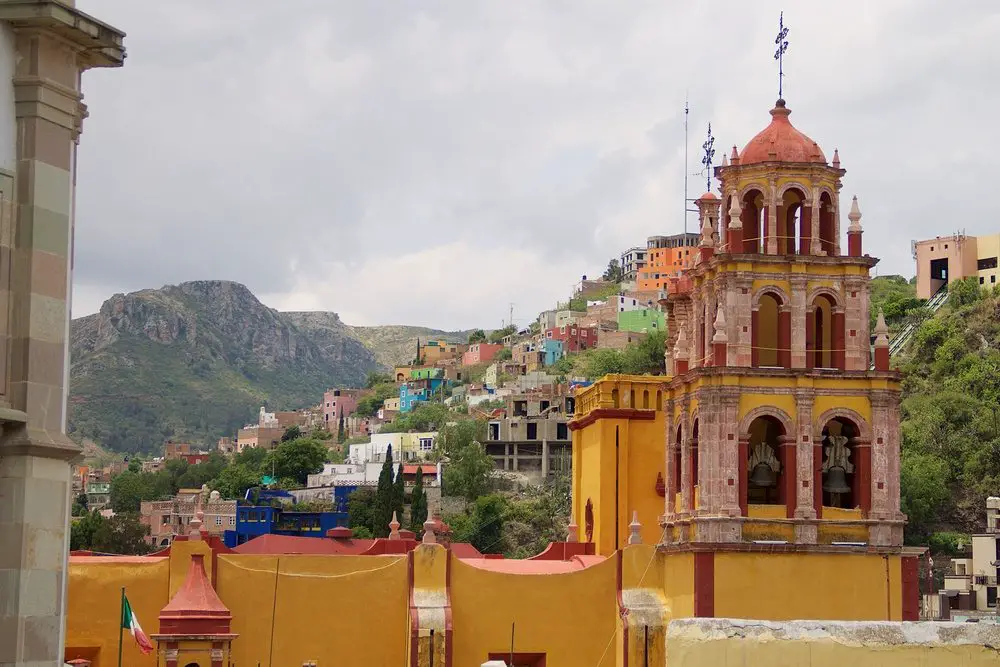
For the rest of us, Mexico is a vast country, considerably larger than the combined area of Spain, France, Belgium, the Netherlands and Germany! Choose between cities, countryside, jungle, beaches, mountains or small villages – with very close to two million square kilometres, you won’t run out of options.
Update: Mexico elected a new president in 2018, Andrés Manuel López Obrador, who is the first leftist leader in Mexico’s modern history. He promised to end the corruption, poverty, and violence that have plagued Mexico for decades.
Obrador has also raised the minimum wage, passed a labor reform law, and cancelled some tax breaks for big corporations. Sounds cool, right?
The cost of living in Mexico is much lower than in the US or Australia, but that would also depend on where you live and what kind of lifestyle you prefer. In general, the cost of living in Mexico is still 51.77% lower than in the US, excluding rent. Rent in Mexico is 73.67% lower on average!
The final alternative:
If the kids have flown and you’re ready for adventure, any and all of the above countries are worth consideration. But many of us still have family at home and all the challenges that raises when considering moving to a less developed nation. Think health care, child safety and education. So is there an alternative for you that will get you off the treadmill? Definitely, and it’s right there in your backyard.
Technology is advancing at such a rapid pace that many of us do not need to live in a major urban area. Within your own country there are beautiful, low key alternatives where housing costs are substantially lower and where farmers’ markets sell local, healthier produce at value prices.
These are towns and smaller cities where you can live on a block of dirt big enough for a vegetable patch and a few chickens, fostering a sense of self-sufficiency. Places where you know your neighbors and where real community events still happen, creating a strong sense of belonging.
And if you’re a senior looking for a serene and fulfilling retirement haven? Consider exploring some of the 20 small towns in the US listed in this helpful guide: Finding the Perfect Retirement Haven: 20 Small Towns in the US to Consider. These towns offer tranquility, charm, and a chance to embrace a slower pace of life.
The bottom line is that we not only need to ask that ‘why’ question, we need to be able to answer it. If we can’t, then it’s probably time to take stock of your assets and plan a better future. After all, this is the only life you’re going to get. If you need a little more motivation, this post, Of Death and Regrets, may just be the clincher.

